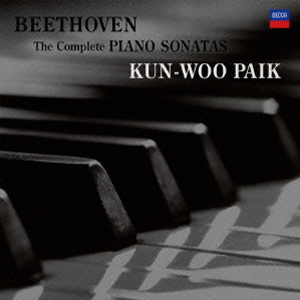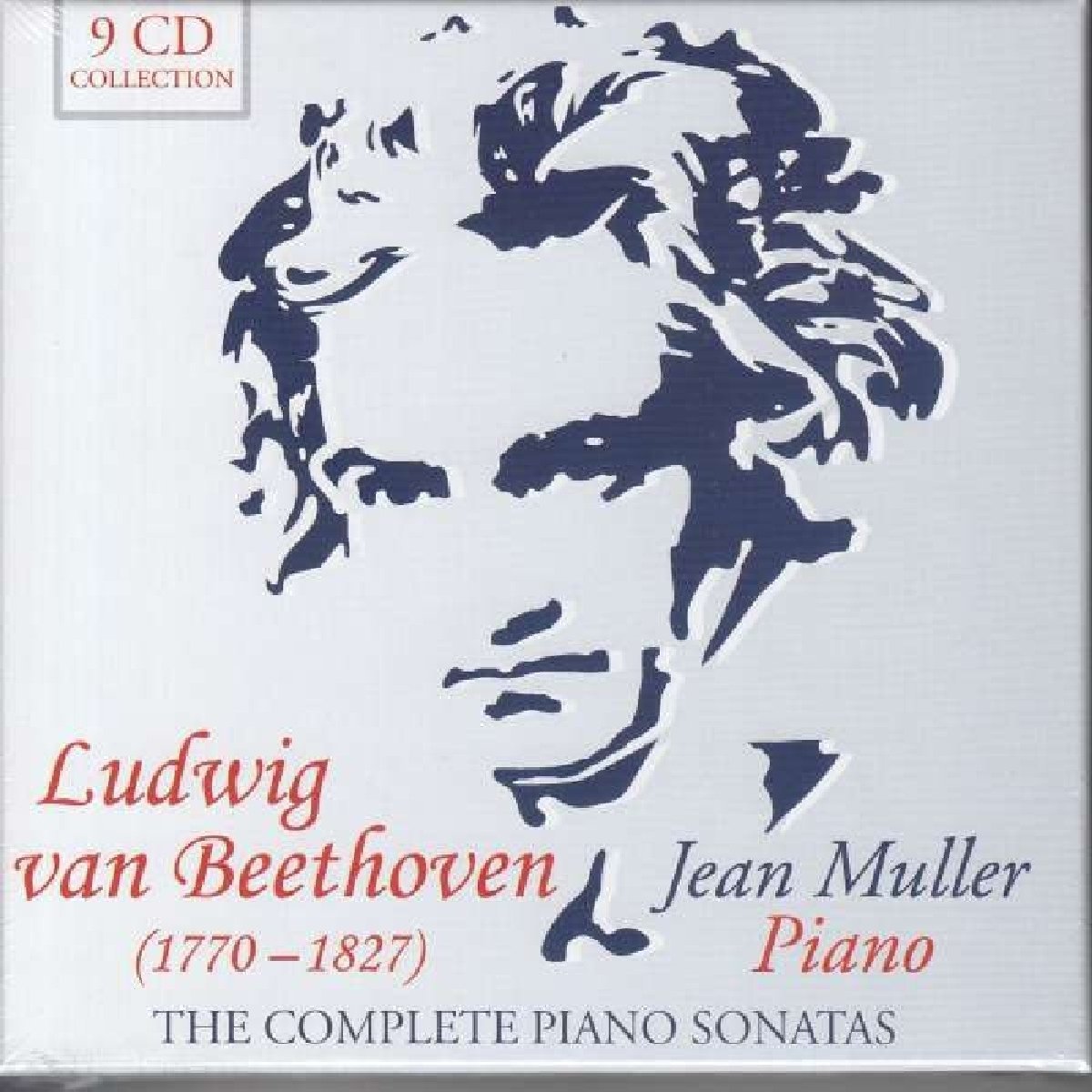Incl: R.Brautigam • P.Lewis • J.Muller • I.Nakamichi • G.Ohlsson • G.Oppitz • K.W.Paik • A.Schiff • S.Sugitani • P.Takács • D.Varínska
Ikuyo Nakamichi 2003 - 2006 - BMG Japan Ikuyo Nakamichi studied under Mitsuko Kinpara, Phyllis Rappaport (Michigan), Kazuhiko Nakajima and Prof. Klaus Schilde at the Hochschule fur Musik in Munich on a scholarship from the Japanese Ministry of Cultural Affairs. In 1982 Nakamichi won first and the Masuzawa Prize at the 51st Annual Japan Music Competition. Available in Japan and:
| ||||||||||||||||
 | Gerhard Oppitz 2004 - 2006 - Hänssler Oppitz' Beethoven cycle flew under the radar, compared to those of Schiff and Lewis, but it is, along with those two, one of the most notable to have been produced in this decade. I've not come across anything fancy in this cycle, but some astonishingly fine playing. Availability (previously in eight individual volumes, now also as a box):
| |||||||||||||||
Garrick Ohlsson 1992 - 2007 - Bridge (Arabesque) Availability (in eight individual volumes):
| ||||||||||||||||
 | Sequiera Costa 1999? - 2007? - Claudio Records Recordings licensed from the Vienna da Motta Intl. Music Foundation which used to hold a tri-annual music competition and which was founded by Sequiera Costa in honor of one of his teachers. Available only individually - on 10 discs, even as the record company (if one can call it that) shows only eight volumes with partly different covers. Absolutely bare-bone presentation. Availability:
| |||||||||||||||
Peter Takács 2001 - 2007 - Cambria Records Extraordinarily complete and lavishly presented set of 11 SACDs that includes all 38 (!) Sonatas ("Elector Sonatas" WoO 47 1-3, "Two Easy Sonatas" WoO 50 & 51, Sonata for Four Hands in D-major, op.6) and the Andante favori WoO57. Availability:
| ||||||||||||||||
 | András Schiff 2004 - 2007 - ECM Schiff used a Boesendorfer and a Steinway Grand for these recordings, taped live (except for the last three sonatas) and played in sequence. A review of volume one exists here. Charles has reviewed several other volumes as they came out. Availability (in eight individual volumes) and as of December 2016 also in a neat boxed set:
| |||||||||||||||
Paul Lewis 2004 - 2007 - Harmonia Mundi Availability (in four volumes and complete):
| ||||||||||||||||
 | Kun-Woo Paik 2005 - 2007 - Decca (Korea) Perhaps Decca sent up a test-balloon in the West when they released one volume of this cycle world wide. After that it was back to releases for the Asian (Korean?) market only. Availability of Sonatas 16-26 (complete set only in Asia):
| |||||||||||||||
 | Shoko Sugitani ???? - 2007? - IDC Classic Not available as far as I know. (Volume 11 found on HMV.co.jp) Availability:
| |||||||||||||||
 | Daniela Varínska ???? - 2009? - Diskant Available (9 of 11? volumes) from Slovakia or in Japan. Availability:
| |||||||||||||||
  |  Ronald Brautigam 2003 - 2008 (& beyond) - BIS Among the myriad of new Beethoven cycles flooding the market, this is one of the select few that are consistently exciting, fresh, and superbly played throughout. The fact that it uses original instrument helps, but it isn't the key to this cycle's qualities, nor the key to enjoying it. The instruments (delightful, marvelous Paul McNulty creations) sound so great that even the "HIP-averse" ought to sample and see if they can't be converted. Volumes 1-8 contain all the standard 32 sonatas, volume nine all the non-standard sonatas, and the following volumes all the Bagatelles, Piano Pieces, and Variations. This makes this the most complete cycle by one pianist, ahead of Peter Takács' (see above). Update:The complete set has now been released, on SACD, as below. Availability:
| |||||||||||||||
  | Jean Muller 2007 - 2009 - Bella Musica / Membran Live recordings from a young Luxenburgian pianist. Originally recorded for Bella Musica. Most recently re-issued on Membran. (A sketchy cheapo-label, though in this case apparently a straight-forward licensing deal.) Availability:
| |||||||||||||||
  | Irina Mejoueva 2007 - 2009 - WAKA (Japan) A Russian pianist working out of Japan. A review by Todd can be found here. Availability:
| |||||||||||||||
  | Hiroaki Ooi 2008 - 2009 - King International [Opus55] A HIP cycle extending to the Symphonies in the Liszt transcription, performed on 9 different historical instruments: For the sonatas these instruments were used: Andreas Stein (replica), Anton Walter (replica by McNulty), Jones & Round (1805, original), Broadwood (1817, original), etc. - and for the symphonies Ooi used a Johann Baptist Streicher 1846 (original), a Pleyel (original), and an Erard 1851 (original). Recorded live during 15 concerts in Kyoto; in 2008 and 2009. A few individual releases are on-and-off available on Amazon in Japan; some are available for streaming on iTunes. Apparently the whole set was never released, to begin with... which explains why they cannot be found anywhere. Ooi has moved on to perform - perhaps even record? - other Beethoven works (Variations, Bagatelles, and various short works), the Kurfürstensonaten on a historical clavichord, as well as piano solo versions of his 16 string quartets! Availability:
| |||||||||||||||
This listing of all Beethoven Sonata Cycles will continue as more sets reach completion or as I find more information about sets already completed.* There are certainly plenty sets under way that should or may reach completion soon: Among them Angela Hewitt (Hyperion), Igor Tchetuev (Caro Mitis), Jonathan Biss (Onyx), Akihiro Sakiya (DPIC Entertainment), Martin Roscoe (Deux-Elles), James Brawn (MSR), Paavali Jumppanen (Ondine) [Completed & Added], Yusuke Kikuchi (Triton) [Completed & Added] et al. I will also add a selection of historically important attempted cycles that were never finished but include
* If you count, as I did, Backhaus II and Arrau II as complete, despite one and two (respectively) missing sonatas. I do not count Walter Gieseking (tapes of 4, 5, 7, 20, 22 for a radio cycle are lost, a studio cycle for EMI was missing seven sonatas when he died), Wilhelm Kempff "0" (Polydor, opp.2/3, 22, 27/1, 28, 31/2, 101 missing).
** Invaluable research on this end done by Todd, resident Beethoven-Sonata expert (and addict) at the Good Music Guide Forum.
The (Great) Incomplete Cycles
Part 1: 1935 - 1969
Part 2: 1967 - 1974
Part 3: 1977 - 1989
Part 4: 1990 - 1996
Part 5: 1996 - 1999
Part 6: 2000 - 2005
Ronald Brautigam Special
Part 8: 2010 - 2013
Part 9: 2014 - 2016
Part 10: 2017 - 20__
If you have additional information about recording dates, availability, cover art -- or corrections and additions -- your input is much appreciated.
This survey is meant to list all complete sets of Beethoven's Piano Sonatas and their availability in different markets, not to review them.
There are still cycles that I have overlooked or which are still missing vital information. Many of them were/are only distributed on the Asian market. Any further information about these would be much appreciated. Many thanks to Richard Winton, at this point, for vital help confirming the existence of--and supplying information for--Michael Steinberg's cycle (originally on Elysium LPs).
An Index of ionarts Discographies
Follow @ClassicalCritic

